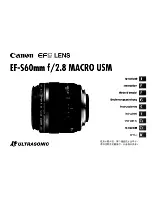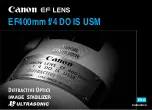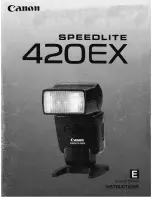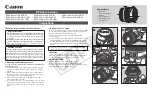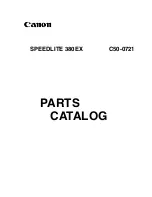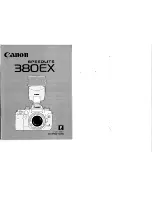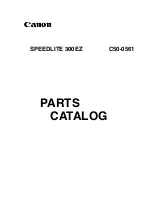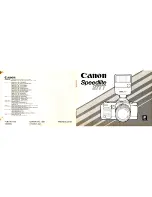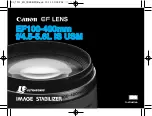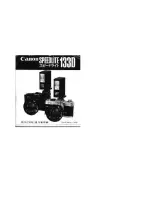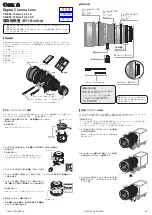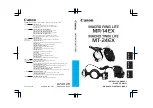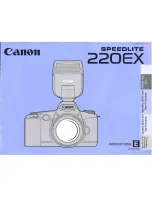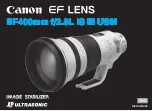
QUESTIONS AND ANSWERS
Q: The film rewind knob does not turn when
winding the film, although the camera is loaded
with film.
A: This indicates the film is not being wound be-
cause it has slipped out of the take-up spool.
Load the film correctly again.
Q: A dark shadow "shimmers" in the microprism
collar or in the split image rangefinder in the
center of the viewfinder.
A: This phenomenon will occur when an inter-
changeable lens of F5 or slower is used or when
the preview button is pressed with the aperture
set to F5.6 or smaller. However, there is nothing
wrong with the microprism.
Q: The display in the viewfinder turned off while I
was looking through the viewfinder.
A: To conserve battery power, it will automatically
turn off after 60 seconds. To turn it on again,
press the shutter release button lightly.
Q: In the auto mode, the actual shutter speed
seems to be slower than the one displayed in
the viewfinder.
A: If the shutter is fired in auto mode with no
film in the camera, the shutter speed will be
slower than that displayed in the viewfinder.
This is because the OM-PC uses an "OTF"
Light Metering that measures the light reflected
off the film plane. To test the shutter, load an
unwanted roll of film that has not been de-
veloped or the test card that comes with your
camera.
Q: The film rewind crank won't turn.
A: Press in the film rewind button. Do not force
the rewind crank.
Q: The film advance lever does not operate. Why?
A: You have wound the film, but you have not yet
tripped the shutter. If you depress the shutter
release button, you will be able to operate the
advance lever. It is also possible that the film
has come to its end. If the exposure counter
shows the last frame of your film, do not force
the lever, but rewind the film back into its
cartridge.
Q: The film advance lever does not operate and I
see nothing in the viewfinder.
A: The camera is designed to be switched off for
safety when the batteries are exhausted. If the
audible and visual signals do not function when
you rotate the mode selector dial to the "BAT-
TERY CHECK" position, be sure to replace
both batteries.
Q: When must the batteries be checked?
69
Summary of Contents for PC I
Page 1: ......
Page 4: ...3...
Page 6: ...Remove the rear lens cap Remove the body cap 1 2 Mounting the Lens 5...
Page 24: ...Manual Exposure 1 Set the mode selector dial to the MANUAL position 2 Set the aperture 23...
Page 29: ...Other Operations 28...
Page 30: ...Using the Self Timer 1 2 Wind the film once Set the self timer lever 29...
Page 56: ...55...
Page 67: ...For Longer Service of Your Camera 66...
Page 68: ...Handling Care Take care in handling the camera Do not apply excessive force 67...
























